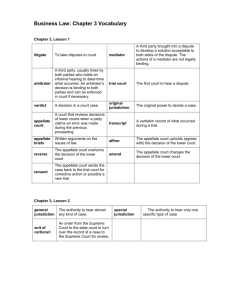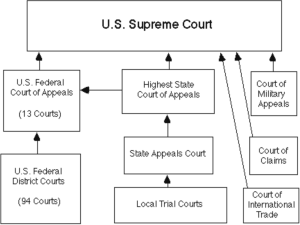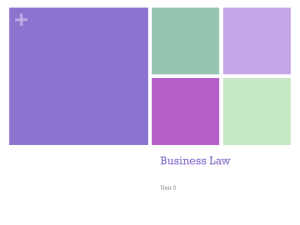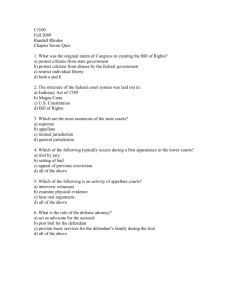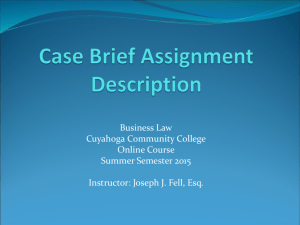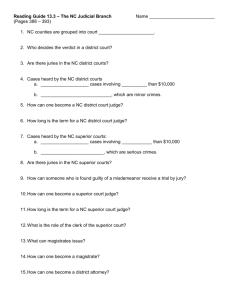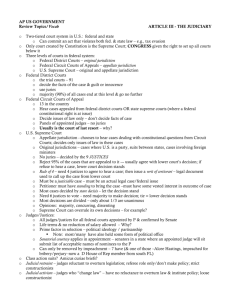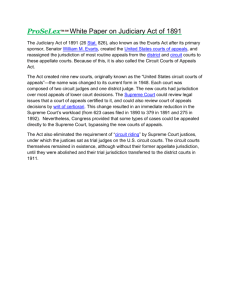Chapter 3 Notes
advertisement
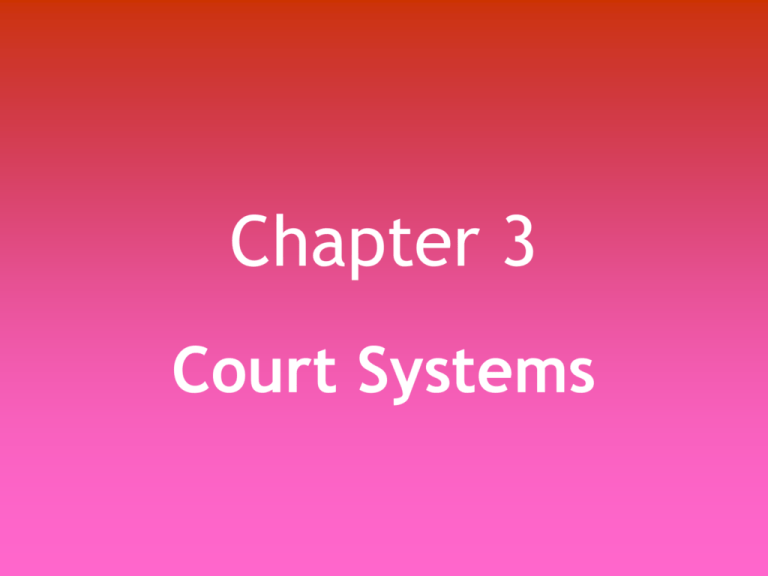
Chapter 3 Court Systems Section 1 Forms of Dispute Resolution GOALS • Explain how disputes can be settled WITHOUT going to court. • Name the different levels of courts and describe their powers. Resolving Disputes without Going to Court • As a society we are too quick to litigate (go to court) • Sometimes the best & cheapest thing to do is resolve the issue directly with the person (negotiate) Alternatives to face-to-face negotiations • Have an unbiased third party act as a mediator. A mediator’s decisions is not legally binding. • Have an arbitrator determine your issue. An arbitrator's decision is legally binding. How Do Courts Settle Disputes? 1. Trial court – where the dispute (disagreement) is first heard. Determines the facts of a case, apply the rule of law, and reach a verdict.*original jurisdiction 2. Appellate court- reviews decisions lower courts made. Only look for the errors in the law.* special jurisdiction – They examine the transcripts (record of what people said) of the court case. – They read the appellate briefs from the attorney’s – Appellate Court decides whether the decision the lower court made should be: • Affirmed (stay the same) • Reversed (overturned) • Amended (changed) • Remanded (sent back to trial court for corrective action or a new trial) Section 2 The Federal Court System Federal Court System 1. Federal District Courts (lowest) 2. Federal Court of Appeals 3. U.S. Supreme Court (highest) Federal District Courts (lowest) • Trial court (1st to hear case) – Determine the facts – Legal Issue involved • Deals with: – Federal questions or cases about the Constitution, U.S. law, U.S. treaties – Law suits between citizens of different states, U.S. citizen and foreigner, or foreign nation.*diversity of citizenship (case must be for more than $75,000) Federal Court of Appeals • Party appeals result of a case. • Does not accept NEW evidence or call witnesses. • Reviews trial transcripts, appellate briefs, and oral attorney arguments. U.S. Supreme Court • Has original and appellate jurisdiction. • Original: – Cases affecting ambassadors, other public people who represent the U.S. • Appellate: – Writ of Certiorari: Supreme requests the lower court who heard the case turn the case over to the Supreme Court for review. Section 3 State Court Systems GOALS • Compare the structure of a typical state court system with the structure of the federal courts • Identify typical state courts of specialized jurisdiction. Court of Record Accurate, detailed report of everything (evidence, transcripts) that went on at a trial Associate Circuit Courts (County Court) • Hears minor criminal cases, state traffic offenses, and lawsuits under $25,000. • Help alleviate the burden of high courts Municipal Courts • City court dealing with violation of ordinances. Small Claims Court • Handles disputes where the damages asked for are less than $2,500. • No jury involved Juvenile Court • Cases dealing with people between the ages of 13-17. • Society typically believes juveniles should not be tried as adults for their criminal acts. • Juvenile has all the same constitutional rights as everyone else. Juvenile Court Cont. • Cases are heard privately. • Records are sealed when they become 18. • Emphasize rehabilitation instead of punishment. • If the juvenile has not been rehabilitated, they can be tried and punished as an adult. **Only occurs in serious cases. Probate Courts • Administers wills and estates. –When an adult dies, their property and other interests are taken to this court to be divided accordingly.
